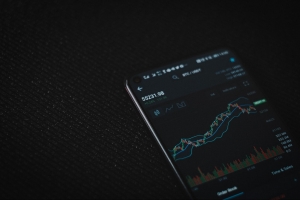Influencer marketing has become a powerful tool in China's e-commerce sector, driving significant sales and brand awareness. The Chinese market, with its unique social media landscape and consumer behavior, presents distinct opportunities and challenges for influencer marketing. This blog will explore the role of influencer marketing in China's e-commerce sector, the strategies used by successful brands, and the impact on consumer behavior and sales.
The Rise of Influencer Marketing in China
Influencer marketing, also known as Key Opinion Leader (KOL) marketing in China, has seen tremendous growth over the past decade. Platforms like Weibo, WeChat, Douyin (TikTok), and Xiaohongshu (Little Red Book) have become hotspots for influencer activities. Unlike the more traditional marketing strategies, influencer marketing leverages the personal connection and trust that influencers have built with their followers.
Key Platforms for Influencer Marketing
- Weibo: Often compared to Twitter, Weibo is a microblogging platform where influencers share content and engage with followers. It is widely used for brand endorsements and product promotions.
- WeChat: Beyond its messaging capabilities, WeChat's mini-programs and official accounts offer influencers a space to share in-depth content and drive e-commerce activities.
- Douyin (TikTok): Known for its short-form video content, Douyin is a platform where influencers create engaging, viral videos that can drive massive traffic to e-commerce sites.
- Xiaohongshu (Little Red Book): This platform combines social media and e-commerce, making it ideal for influencers to showcase product reviews and lifestyle content that directly links to e-commerce stores.
Strategies for Successful Influencer Marketing
Identifying the Right Influencers
Selecting the right influencers is crucial. Brands need to consider the influencer's relevance to their product, the size and engagement level of their audience, and their overall reputation. Micro-influencers, with smaller but highly engaged followings, can often provide a higher return on investment than mega-influencers with millions of followers.
Authentic Content Creation
Consumers in China value authenticity. Influencers who create genuine and relatable content tend to have more influence over their followers' purchasing decisions. Brands should allow influencers creative freedom to ensure the content aligns with their personal style and resonates with their audience.
Multi-Platform Campaigns
Given the fragmented nature of China's social media landscape, running multi-platform campaigns can amplify reach and engagement. A cohesive strategy that leverages the strengths of each platform can create a more impactful campaign.
Live Streaming
Live streaming has become a significant trend in China's e-commerce. Influencers host live-streaming sessions where they showcase products, interact with viewers in real-time, and offer special deals. This real-time engagement drives immediate sales and creates a sense of urgency among consumers.
Impact on Consumer Behavior
Building Trust and Credibility
Influencers have built a level of trust with their followers that traditional advertising cannot match. When an influencer endorses a product, it is seen as a personal recommendation rather than a paid advertisement. This trust translates into higher conversion rates and customer loyalty.
Creating Trends and FOMO (Fear of Missing Out)
Influencers often set trends and create a sense of urgency around new products. By showcasing the latest items, they generate excitement and a fear of missing out, prompting quick purchasing decisions among followers.
Personal Connection and Engagement
The interactive nature of influencer marketing, particularly through live streams and Q&A sessions, fosters a personal connection between the influencer and their audience. This engagement enhances the perceived value of the product and motivates purchases.
Case Studies of Successful Influencer Campaigns
Case Study 1: Perfect Diary
Perfect Diary, a Chinese cosmetics brand, leveraged influencer marketing to become one of the top beauty brands in China. They collaborated with influencers on Xiaohongshu and used WeChat mini-programs for seamless shopping experiences. Their campaigns, focusing on authentic reviews and tutorials, resulted in massive sales growth.
Case Study 2: Li Jiaqi (Austin Li)
Known as the "Lipstick King," Li Jiaqi is one of China's most influential live-streaming KOLs. His live-streaming sessions on Douyin and Taobao Live generate millions of dollars in sales within hours. His honest and engaging presentation style has earned him a loyal following and significant influence over consumer purchasing decisions.
Challenges of Influencer Marketing in China
Regulatory Environment
The Chinese government has implemented strict regulations on online advertising and influencer marketing. Brands and influencers must navigate these regulations carefully to avoid penalties and maintain credibility.
Market Saturation
The rapid growth of influencer marketing has led to market saturation. Consumers are becoming more discerning, and brands must continually innovate to capture attention and maintain engagement.
Measuring ROI
Measuring the return on investment (ROI) for influencer marketing campaigns can be challenging. Brands need to employ advanced analytics to track the impact of their campaigns accurately and adjust strategies as needed.
Conclusion
Influencer marketing plays a pivotal role in China's e-commerce sector, offering brands a powerful way to reach and engage with consumers. By leveraging the trust and influence of KOLs, brands can drive significant sales and build lasting relationships with their audience. However, to succeed, it is essential to choose the right influencers, create authentic content, and navigate the unique challenges of the Chinese market.
For brands looking to tap into this dynamic market, partnering with trusted influencers and staying attuned to the latest trends and regulations is crucial. As influencer marketing continues to evolve, it will remain a key driver of growth and success in China's e-commerce landscape.





